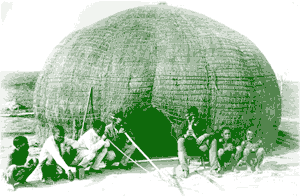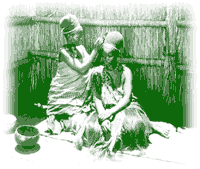|
Many centuries ago an African people of Nguni descent migrated southwards from Central Africa and eventually, during the mid-eighteenth century, a group of them settled in the area which is now Swaziland. These people, the Nkosi Dlamini, became known as the Swazis, and today both names occur often: Nkosi means king and Dlamini is the surname of the royal family. The Swazis are a proud but peaceful people with happy, easy-going and often humorous personalities which has earned them the title Latins of Africa.
Old Swazi traditions are carefully guarded and colourful ceremonies frequently take place to mark special occasions. There are two main rituals: the Umhlanga or reed dance and the Incwala, or first fruits ceremony. The Umhlanga, which takes place during September, involves young, unmarried girls and women who travel to the royal kraal, or village, to honour the Queen Mother and perform traditional dances. On the way, they gather reeds and it is from this custom that the ceremony derives its name.

Much of the Incwala involves sacred and secret rites and entails direct participation by the King. The date of this occasion is selected by Swazi astrologers who monitor the moon phases to determine the ideal time in December or January. The ritual begins with a journey to Mozambique to collect water from the Indian Ocean and after the performance of various rites by young men, leads to the slaughter of a bull on the third day to promote fellowship. On the fourth day the King appears in full ceremonial dress and after taking part in certain rituals and dances with his warriors, he eats the new fruits.

Although western dress is widely utilised, the Swazi people have a distinctive, colourful national dress known as emahiya and this is regularly worn by men, women and children. Different accessories and head dresses are used depending on the status and age of the individual, as well as on the occasion.
By tradition Swaziland is a polygamous society and men may take several wives on payment of a dowry, known as lobola, which normally entails giving cattle to the brides' parents. However, monogamous marriages, performed in the western custom, have become more common as Swazis adapt to and adopt the Western lifestyle. However, the cultural heritage is deeply rooted and carefully protected and sustained.
The Monarchy
Cultural snippets: The tale of the tail | The traditional Swazi homestead | Rituals
|
